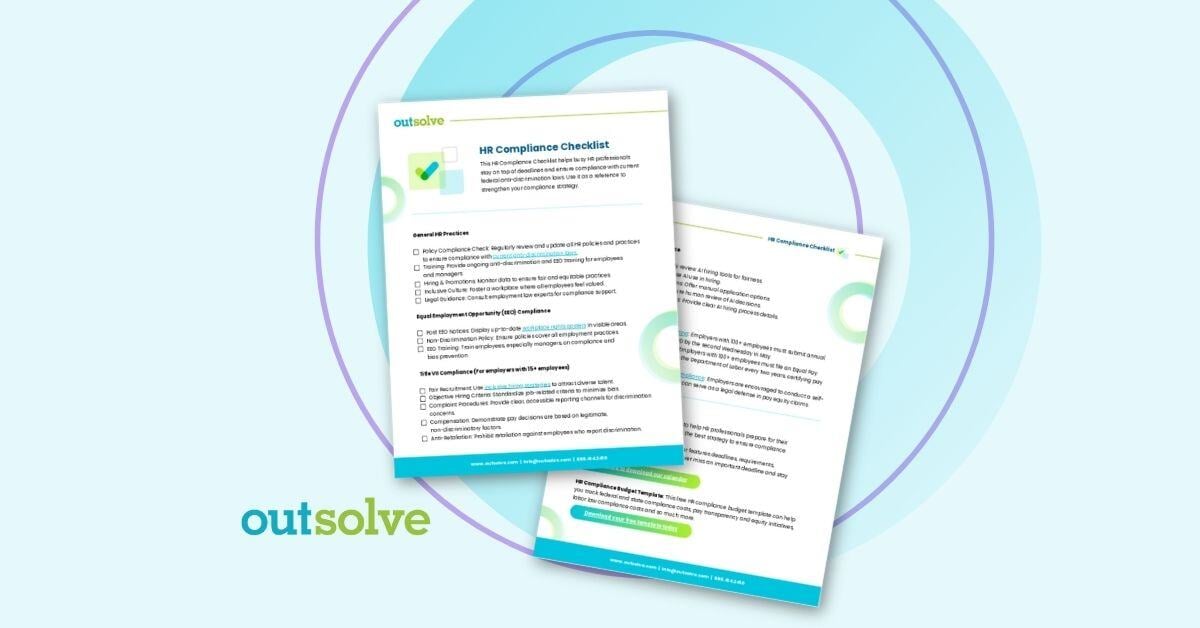OutSolve’s EEO colleague, Toni Ahl, is an occasional contributor to our blog. The views, thoughts, and opinions expressed in this article belong solely to Toni and do not necessarily reflect the viewpoint of OutSolve or its employees.
Sex was one of the original bases covered by Title VII of the Civil Rights Act of 1964 (Title VII). The term sex discrimination has evolved throughout the years and now encompasses many additional areas of sex discrimination that Congress had not initially considered. Let’s look at some of the changes.
In 1964, sex discrimination primarily centered on male and female employees being treated differently in the workplace and that difference was due to the sex of the employee. It covered the terms and conditions of employment like hiring, discharge, demotion, and discipline. Additionally, wages and benefits were covered.
Keep in mind that the Equal Pay Act (EPA) was enacted in 1963 and preceded Title VII. The EPA prohibited the differentiation of wages between male and female employees performing comparable tasks that demanded similar levels of skill, effort, and responsibility. Therefore, Title VII provided more protections for female workers than the EPA.
As case law evolved, the Equal Employment Opportunity Commission (EEOC) posited that pregnancy should also be covered as a form of sex discrimination if an employer took an adverse action against an employee due to their pregnancy. In 1978, the Pregnancy Discrimination Act (PDA) was enacted and was an amendment to Title VII. Under the PDA, pregnant employees were to be treated like other employees with a “temporary” disability. Note that the PDA preceded the Americans with Disabilities Act (ADA) by twelve years. When the ADA was enacted in 1990, it was clear that pregnancy was not a condition that was covered under the ADA. However, employees were still protected from discrimination by the PDA.
When sexual harassment came to the forefront with some landmark cases in 1986 (Vinson v. Meritor Savings Bank), in 1989 (Price Waterhouse v. Hopkins) and in 1998 (Faragher v. City of Boca Raton, Burlington Industries v. Ellereth, and Oncale v. Sundowner Offshore Services), it came to the attention of the public that sexual harassment was prohibited and was a form of sex discrimination. The Oncale case involved same sex sexual harassment and concluded that same sex sexual harassment was also covered by Title VII.
After the ADA Amendments Act was passed in 2008, while pregnancy remained outside the Act's coverage, certain conditions associated with pregnancy and childbirth could be eligible for coverage. This determination hinged on whether the condition significantly restricted a major life activity. In 2015, the EEOC released policy guidance on PDA coverage, providing clarification that employers, contemplating adverse actions or benefits-related decisions concerning pregnant employees, should compare them to non-pregnant counterparts with similar abilities or work-related limitations.
In June 2020, based on a trilogy of cases (the Bostock decision), the Supreme Court agreed that discrimination based on someone’s gender identity or sexual orientation was protected by Title VII. Although EEOC had issued policy guidance prior to this decision stating the same thing, the Bostock decision reinforced EEOC’s position.
The newest statute over which EEOC was given enforcement authority is the Pregnant Workers Fairness Act (PWFA) which was enacted in December 2023 and was effective on June 27, 2023. The PWFA extends more protections to pregnant employees who may need reasonable accommodation due to pregnancy, childbirth, or related medical conditions but whose conditions do not rise to the definition of a disability under the ADA.
As you can see, sex discrimination has evolved and will very likely continue to evolve as we move forward. The original definition has been expanded and may continue to do so through the years. The laws change as society evolves and changes.
If you have questions about any of the laws EEOC enforces, reach out to me with your questions. My phone number is (502) 553-7648 and my email address is eeoadvantage@gmail.com. And Happy Women’s History Month!
President at EEO Advantage, LLC
Weekly OutLook
Featured Posts

New Year, New Deadlines: 2026 HR Compliance Calendar

outRageous HR: Plan Now or Pay Later
Related Posts

Refreshing Your I-9 Tools and Process to Stay Compliant
Form I-9 is a federal requirement that carries real consequences if handled improperly. With increased scrutiny on immigration by the current...
.png)
New Year, New Risk: Why Federal Contractors Can’t Hit Snooze
Lean in to disciplined, data‑driven compliance

An HR Year in Review: Key Updates in 2025
The unpredictability of 2025 has been an uphill trek for HR teams across the U.S. This year brought substantive employment compliance changes to...
 Toni Ahl
Toni Ahl
.png)
